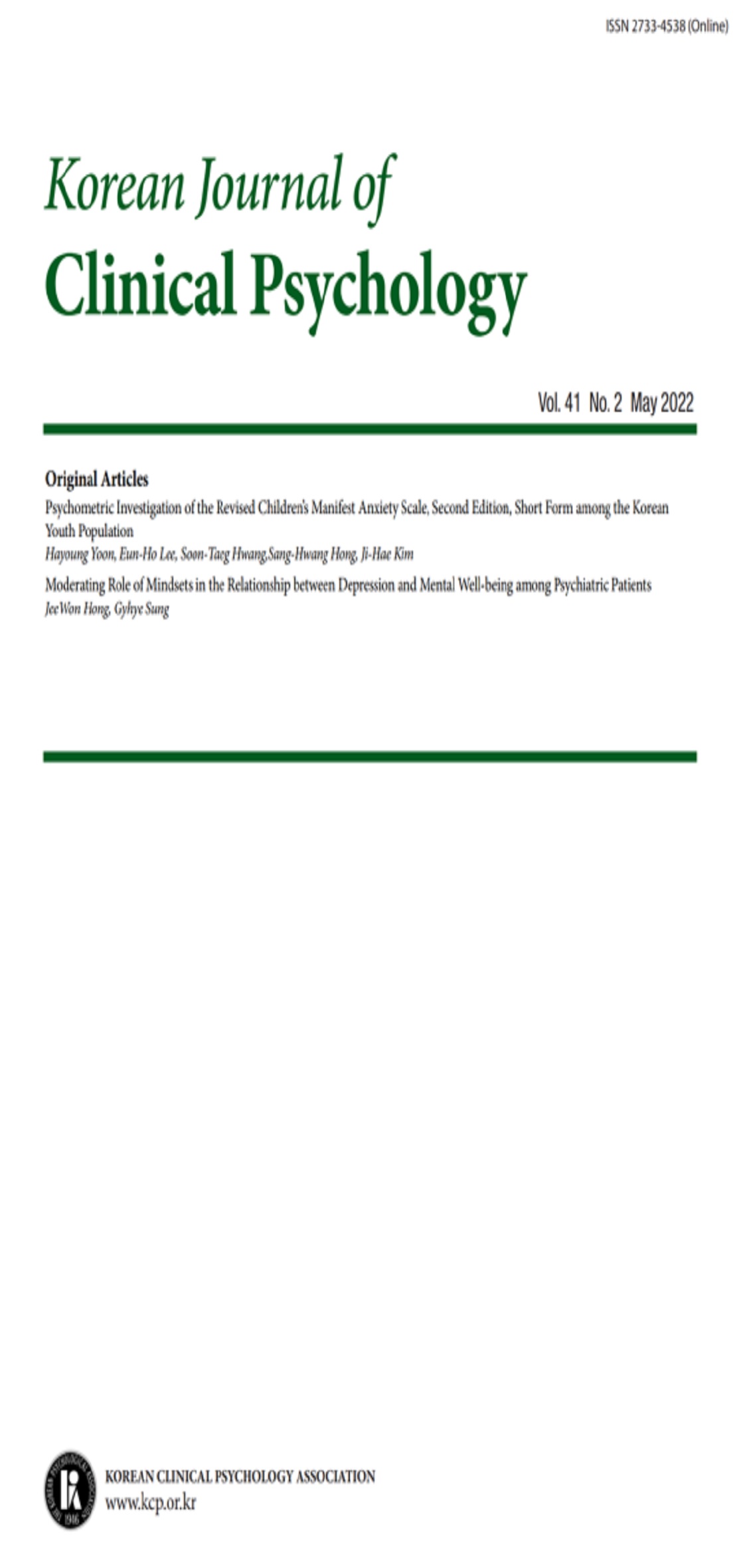open access
메뉴
open access
메뉴 E-ISSN : 2733-4538
E-ISSN : 2733-4538
여자 고등학교 청소년들을 대상으로 애착과 MMPI 하위척도들의 관계를 연구하였다. 애착양식의 분류를 위해서는 Hazan과 Shaver의 3범주 척도가 그리고 어머니와 아버지 및 동년배에 대한 애착정도를 측정하기 위해서는 IPPA가 사용되었다. 애착양식과 MMPI 및 3인의 애착인물에 대한 애착정도와 MMPI의 관계는 변량분석에 의해 검토되었고 판별분석은 3인의 애착인물에 대한 애착과 MMPI의 반응패턴에 따른 관계를 확인하였다. 안정된, 회피적 그리고 불안한/양가적 애착양식 중 회피적 애착양식 집단이 가장 큰 부적응적 경향성을 가질 가능성이 있었다. 또한 어머니와 아버지에 대한 애착은 개인의 부적응적 특성과 유의하게 관련될 가능성이 있었으나 동년배에 대한 애착은 관련이 없다는 결론을 내릴 수 있었다. 정상집단의 칭소년들을 대상으로 연구하였기 때문에 MMPI의 모든 하위척도 점수들이 정상범위 내에 있기는 하지만, 이 연구의 결과는 임상집단을 대상으로 이루어진 연구결과들의 타당성을 입증하는 동시에 개인의 부적응이나 병리적 경향성은 대단히 어린 연령에서 시작된다는 것을 시사하였다.
This study examined differences in the subscales on the Minnesota Multiphasic Personality Inventory according to attachment styles and attachment to mother, father and peers in high school girl adolescents. One way ANOVA revealed that avoidant attachment group seemed to have more maladjustive possibilities than secure and anxious/ambivalent groups. Also attachment to mother and father seemed to be significantly related with alodescent's maladjustive dispostion, but attachment to peers not related to their maladjustment. Although all profiles of MMPI were within the normal range, the results of this study suggest that the maladjustive inclinations of the adolescents seem to begin very early in their life.
